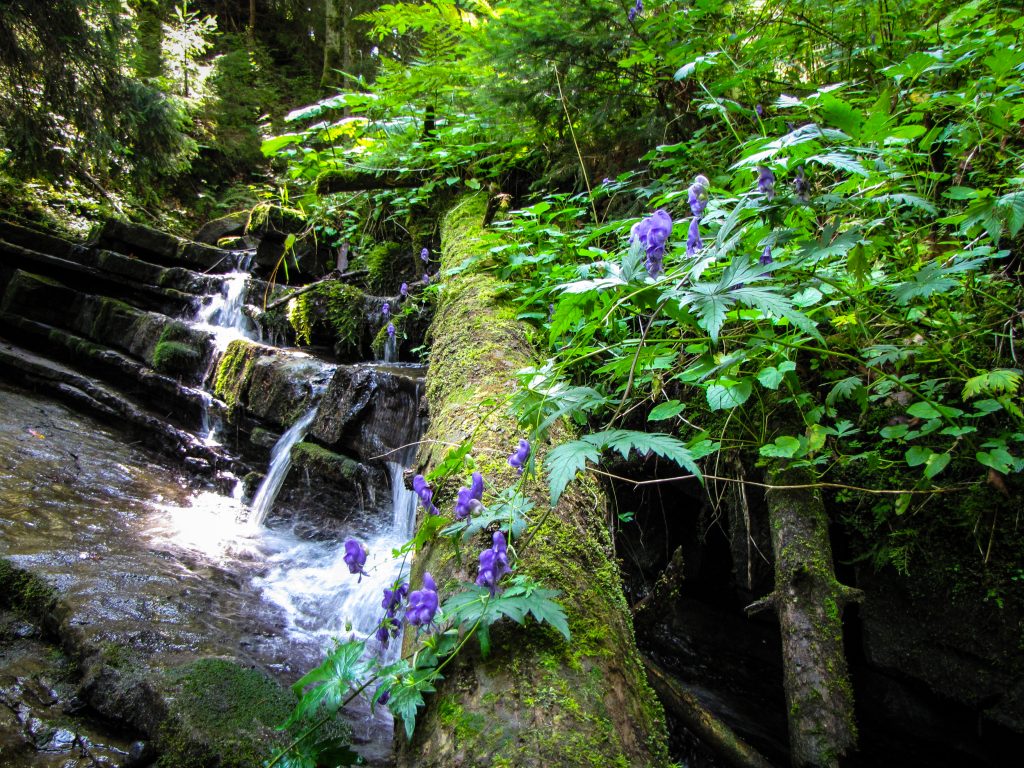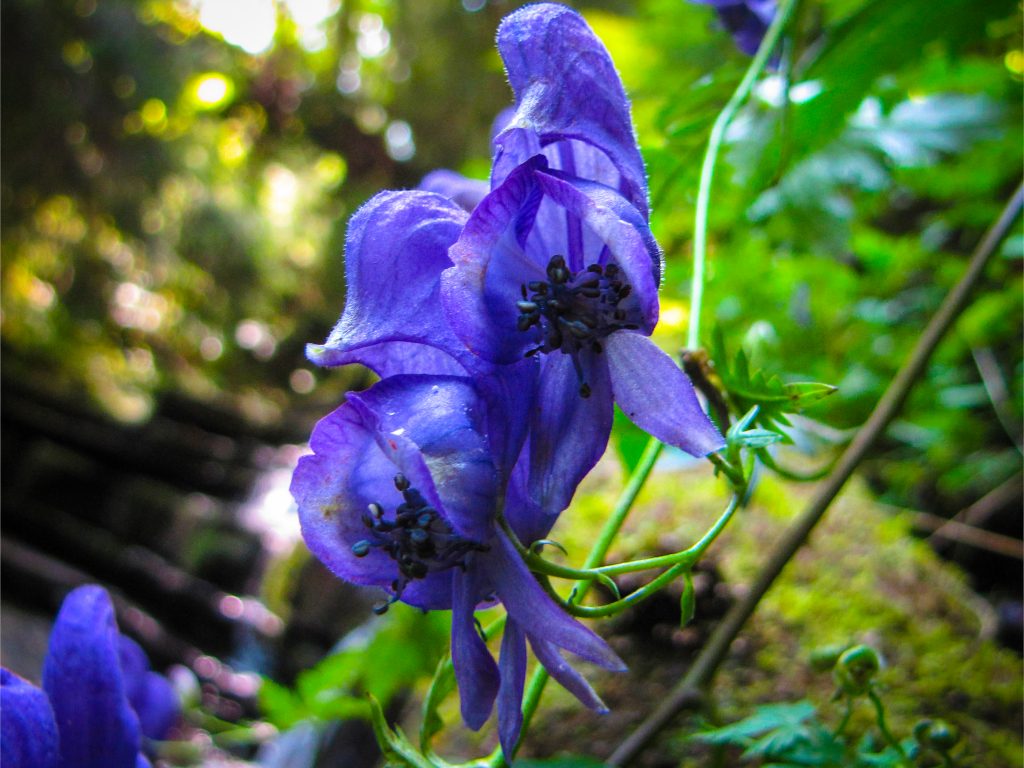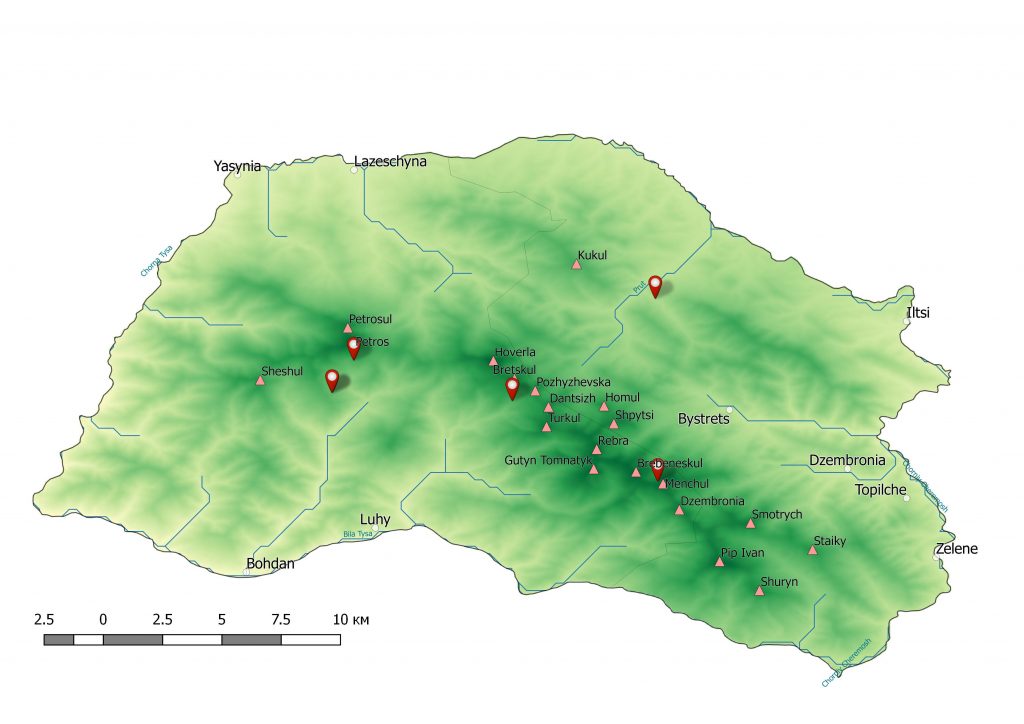Ecological preferences: Scio-heliophytes or helio-sciophytes; hygrophytes or hygromesophytes, rarely – mesophytes; probably subacidophils (Didukh et al. 2004).
Distribution and habitats in Ukrainian Carpathians: The species is mostly distributed in Western and Eastern Carpathians, but also sporadically occurs in Southern Carpathians and related lowlands. In Ukrainian Carpathians it is mostly represented in Eastern Beskids while in other regions it occurs irregularly and rarely. The presence of the species in Eastern Beskids and Chyvchyny Mts. is confirmed by own observations, while the presence of it in Marmarosh, Gorgany and Svydovets Mts. requires further validation. In Eastern Beskids the species is distributed mostly in submontane and lower montane belts while in Chyvchyny Mts. it was observed in upper montane and subalpine belts. These plants grow mostly in semi-shady places, between shrubs and at the forest edges. Very often they occur near the water. However in Chyvchyny Mts. the plants grow in open and dry place, in subalpine herbal communities. As a result, these plants differ by their common habitus. They are high and branched in lower altitudes, and compact with few flowers – in higher altitudes. In general, the species is known from Alnetum incanae, Carici remotae-Fraxinetum, Dentario glandulosae- Fagetum, Trollio-entauretum, Adenostylion, Calthion, and Carpinion communities.
Distribution and habitats in Chornogora: There are known several specimens collected from Chornohora Mts. Also there are known one population from neighborhoods of Vorokhta village. However current condition of all these populations is unknown. Today this species seems to be absent or very rare for Chornohora Mts.
Distribution and habitats in Gorgany: I have found only one location of A. lasiocarpum in Dovbushanski Gorgany, however there are few vouchers sampled in Verkhniolimnytski Gorgany, Syvuliansko-Stanymyrski Gorgany and Arshytsia-Ilemski Gorgany from elevations of 800-1200 m a.s.l. The population that I have found has unique plants holding gemmules in their leaf axils. Such viviparity was reported (Mitka 2003) for A. variegatum, but I never met the information about this phenomenon for A. lasiocarpum. The number of plants in discovered population is about 1000. There are predominantly generative individuals, but also a number of pregenerative plants are scattered along the torrent. The overall condition of the population is good, but, in fact, this is the only confirmed locality in Gorgany.
Threats: This species is protected by Bern Convention and included to the Red Book of Ukraine (Melnyk & Batochenko 2009) too. It was also included in IUCN Red List in 1996, but due to lack of chorological information, was later excluded from the list. In general, it can be evaluated as vulnerable taxon which requires strict protection on whole territory of Ukrainian Carpathians. The condition of its populations in Ukrainian Carpathians in most cases is good, but can be easily depressed by such anthropogenic factors as hydrological changes, deliberate destruction (locals believe that these plants are poisonous for the cattle) and deforestations.





